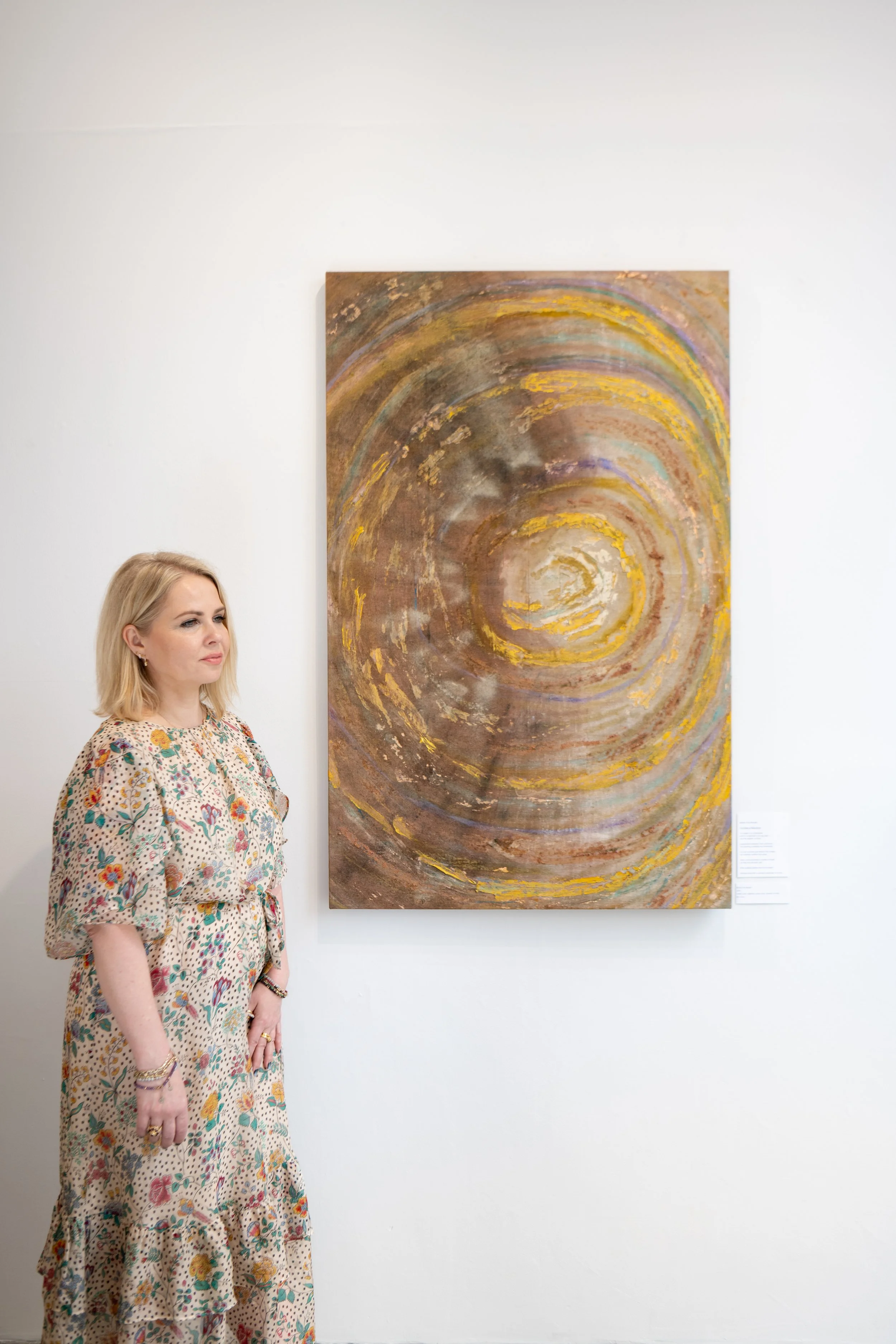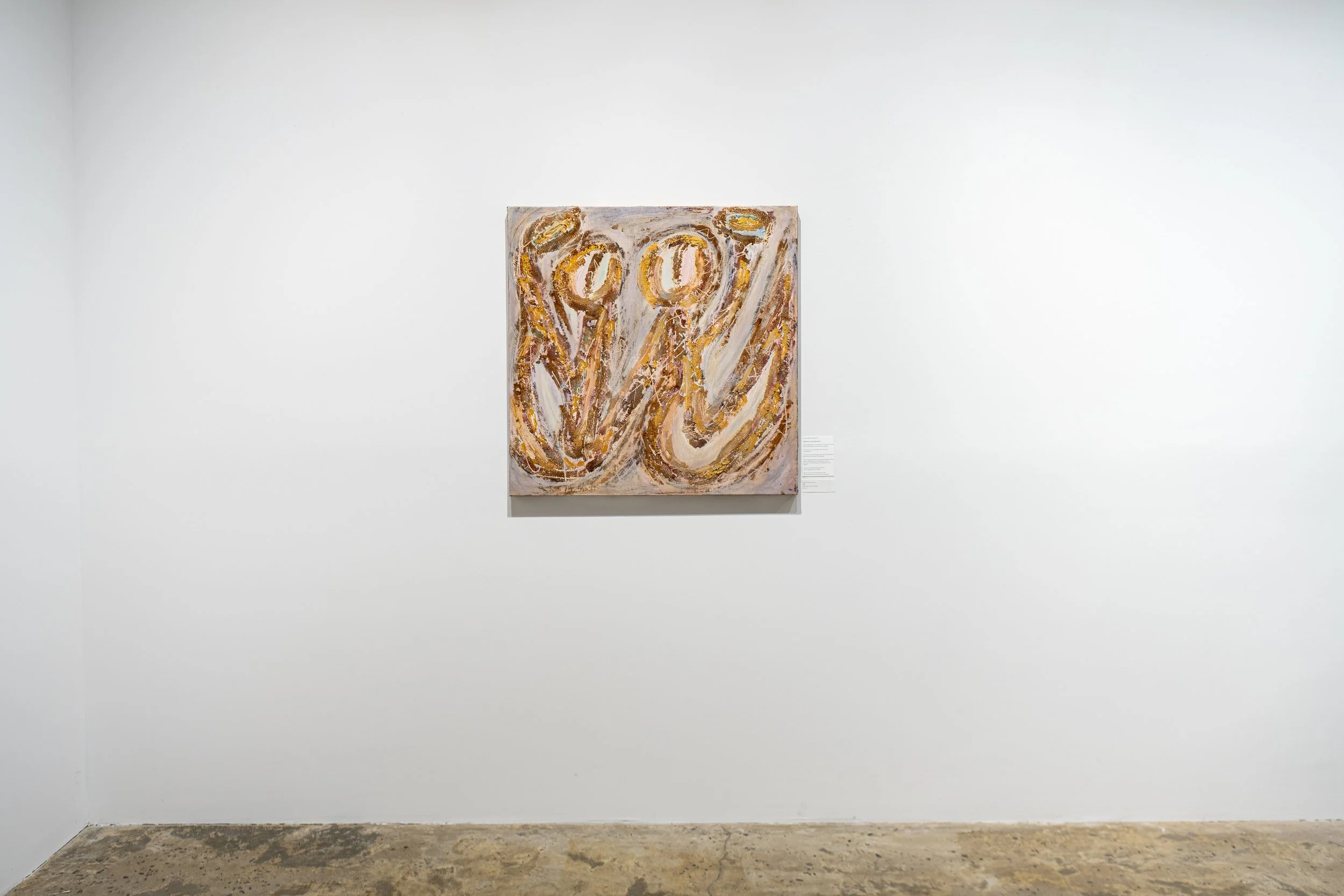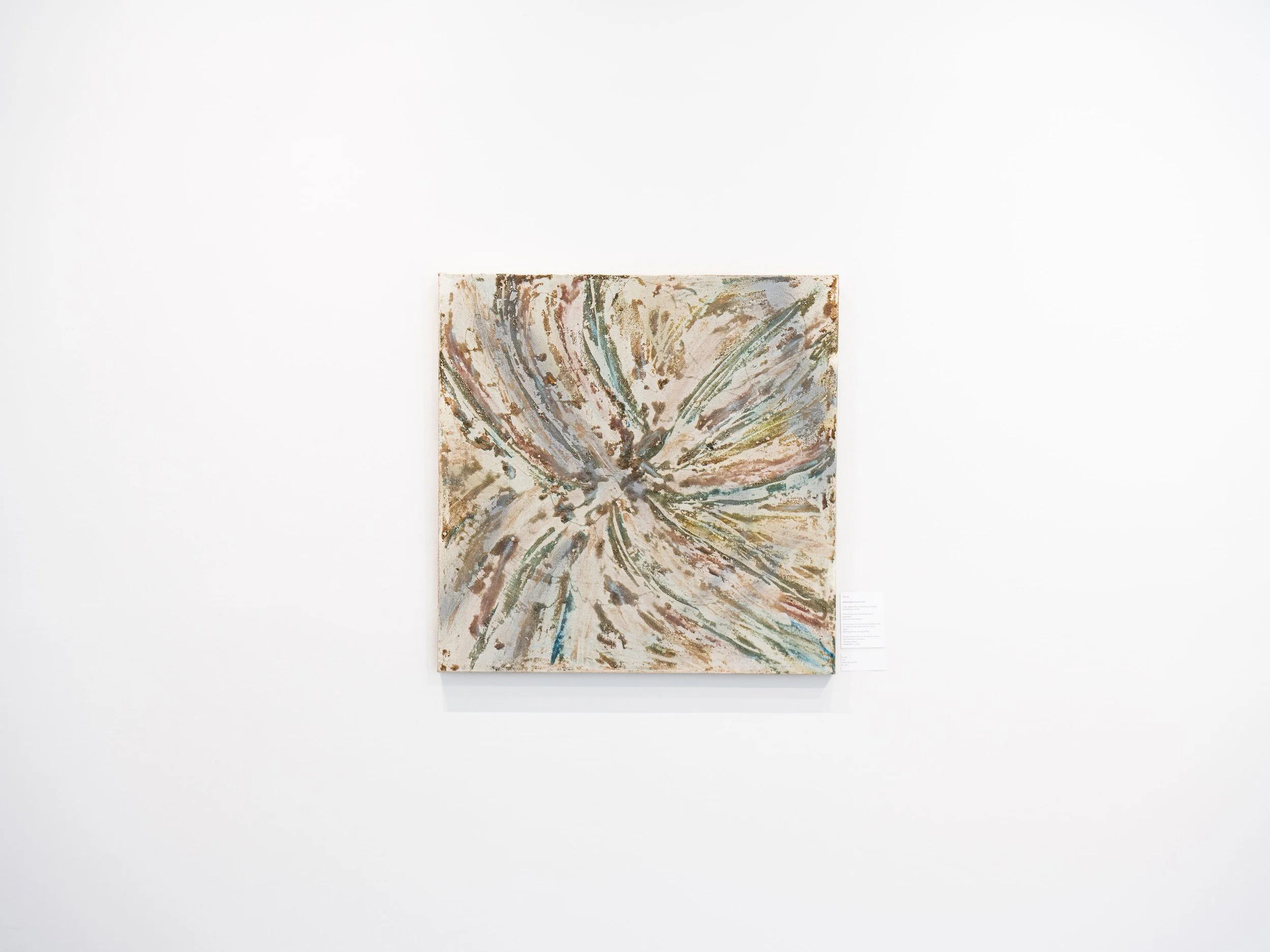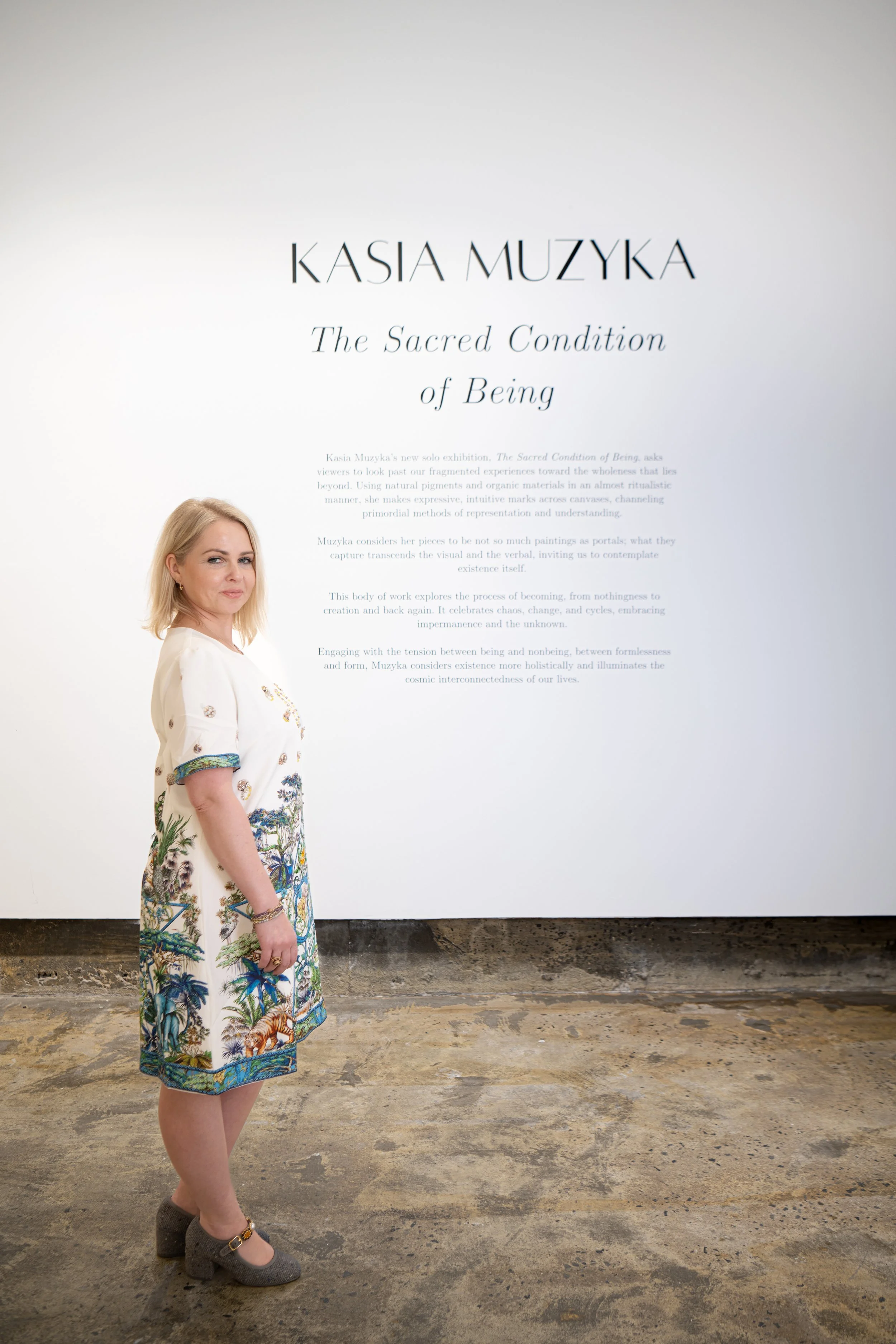In Conversation with Kasia Muzyka
Photo Credit: Shweta Bist
Kasia Muzyka is a Polish-born, Minneapolis-based visual artist whose work explores the intersection of mysticism, memory, and material. Working with natural, symbolic substances—such as wine, coffee, earth pigments, and vibrational water—Muzyka creates intuitive, alchemical paintings that act as portals into consciousness, transformation, and the unseen. Her process is one of deep listening and surrender, allowing each piece to emerge as a living transmission of presence and remembrance. Her work has been exhibited across the U.S. and internationally, resonating with collectors, seekers, and spiritual communities alike.
I had the pleasure of asking Kasia about her most recent exhibition, who she would have dinner with, and interview, as well as what she considers indispensable in her studio, and so much more.
Photo Credit: Shweta Bist
UZOMAH: How does art help you convey how you see the world? What are some key aspects that make creating art more beneficial in how you approach life in general?
KASIA: Art helps me hold life with a wider lens—beyond judgment, beyond the narrow human tendency to define everything as good or bad, right or wrong.
Through creating, I’ve learned to witness existence without needing to categorize it. It offers me a perspective beyond polarity—an opening into presence.
Art has become my own spiritual practice—a space where I connect with the divine and hold what is sacred within me, like placing it on an inner altar.
Each painting is a ritual of remembering, a dialogue with the unseen, a way of honoring what can’t be spoken but deeply felt.
My hope is that through this way of seeing and making, we as a collective can begin to evolve—toward deeper presence, toward compassion, toward truth beyond division.
Photo Credit: Shweta Bist
U: Is there anything unique about your art that you want people to know, something that goes beyond your CV and exhibitions?
K: My art is a ritual. A soft rebellion.
It breaks the rules of judgment and separation—the ones we inherit, often without knowing.
Each piece is created in devotion, not production. It doesn’t follow trends or technique—it follows something older, quieter, and far more honest.
It’s a practice of remembering who we are beneath the noise.
Because once we sign up for survival, we often unconsciously agree to silence what’s true in us.
My art resists that forgetting. It invites presence.
It doesn’t seek to impress—it seeks to uncover.
Photo Credit: Lisa Cline
U: Your recent exhibition, 'The Sacred Condition of Being,' provided visitors with a profoundly personal experience that resonated on multiple levels. How do you infuse your personal experiences into your art, making it speak for itself and also to those who experience it?
K: Carl Jung wrote that the more honest and raw the expression, the more universally it speaks. I’ve found that to be deeply true in my work. When I allow myself to express without censorship—what is real, felt, even uncomfortable—it creates a kind of resonance.
Because beneath all our stories, there are shared rivers running through the human psyche. And when one dares to speak from those depths, it reaches others—not through explanation, but through recognition.
The Sacred Condition of Being was born from that place. From the vulnerability of showing the process, not just the outcome. It invited people to pause, to feel, and perhaps—to recognize themselves in the unseen.
Photo Credit: Shweta Bist
U: If you could have dinner with any artist, living or dead, who would it be? Who would it be and why? What would you talk to them about?
K: If I could have dinner with any artist, it wouldn’t be a famous name from the art books. I’d want to sit with one of the ancient masters who created mandalas—those who treated art not as decoration, but as devotion.
I’d want to watch them enter the process…
To see what they fed themselves with—not just food, but thoughts, prayers, silence.
To witness how they prepared their body, their mind, their spirit before a single line was drawn.
And then I’d ask: What changed in you by creating this?
What did you feel? What did you release?
What part of your soul broke open and was reborn through the act of making?
Because for me, art is not about the image—it’s about the transformation that happens in the one who dares to make it.
U: What is one thing you consider indispensable in your studio? What makes this tool or item so crucial to your creative process?
K: While I do have a favorite little drilling instrument—something tactile and grounding—it’s not about the tools. What’s truly indispensable in my studio is the energy I step into.
My studio is my sanctuary—almost like a church. It’s not just a place to create, it’s a space to remember. Just like when we walk into a sacred space—no matter how we feel—something within us softens, opens. That quiet connection with the most sacred and intimate part of ourselves — that inner shift, is what I lean into before I begin.
Painting for me is a celebration of the sacred that always exists, even amidst the chaos of becoming. That moment of inner stillness—of presence—that is the most essential part of my creative process.
U: In times like these, how can art provide a better answer than what has been provided by the higher-ups?
K: The more we’re able to connect with what truly lives within us, the greater the potential for meaningful transformation in the world around us.
It takes courage to see the beauty within—but even more strength to face the shadowy, uncomfortable parts. And yet, the more we’re able to accept those parts inside ourselves, the less they need to be mirrored on a collective level.
It’s not only about what the higher-ups say—it’s that there’s still a crowd listening. Until that dynamic shifts, change remains surface-level.
There’s also something to be said about the way we speak of things. The more we continue to talk about certain wounds—like racism, war, division—without healing them at the root, the more they remain embedded in the fabric of our reality. Attention is energy. What we feed grows. What we integrate transforms.
When I paint, I don’t try to create something others will necessarily understand. I aim to tell the truth of an experience—without translation, without dilution. And somehow, that raw honesty becomes a bridge.
The work begins to speak for itself—not by explaining, but by remembering something within the viewer they didn’t know they had forgotten—
perhaps… themselves.






